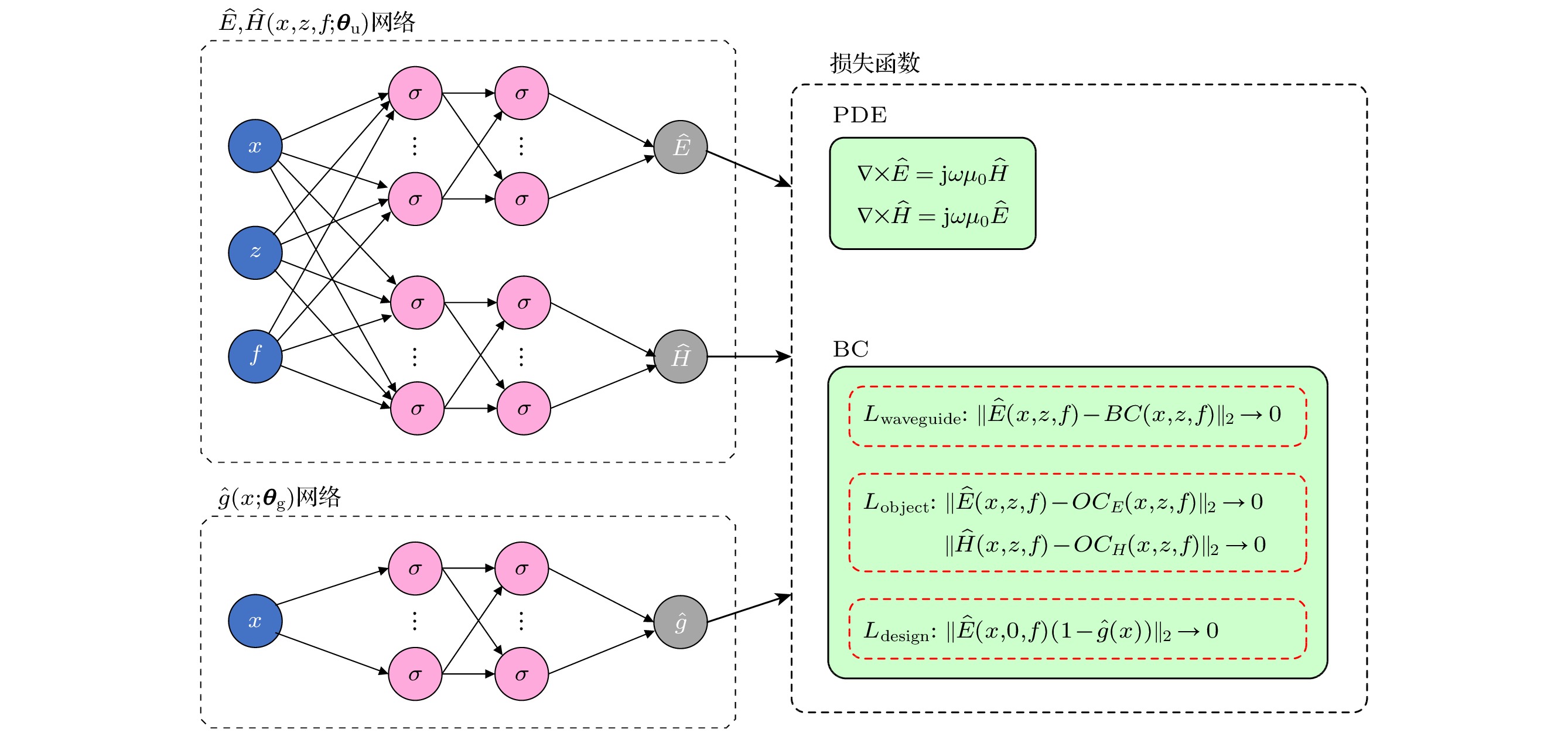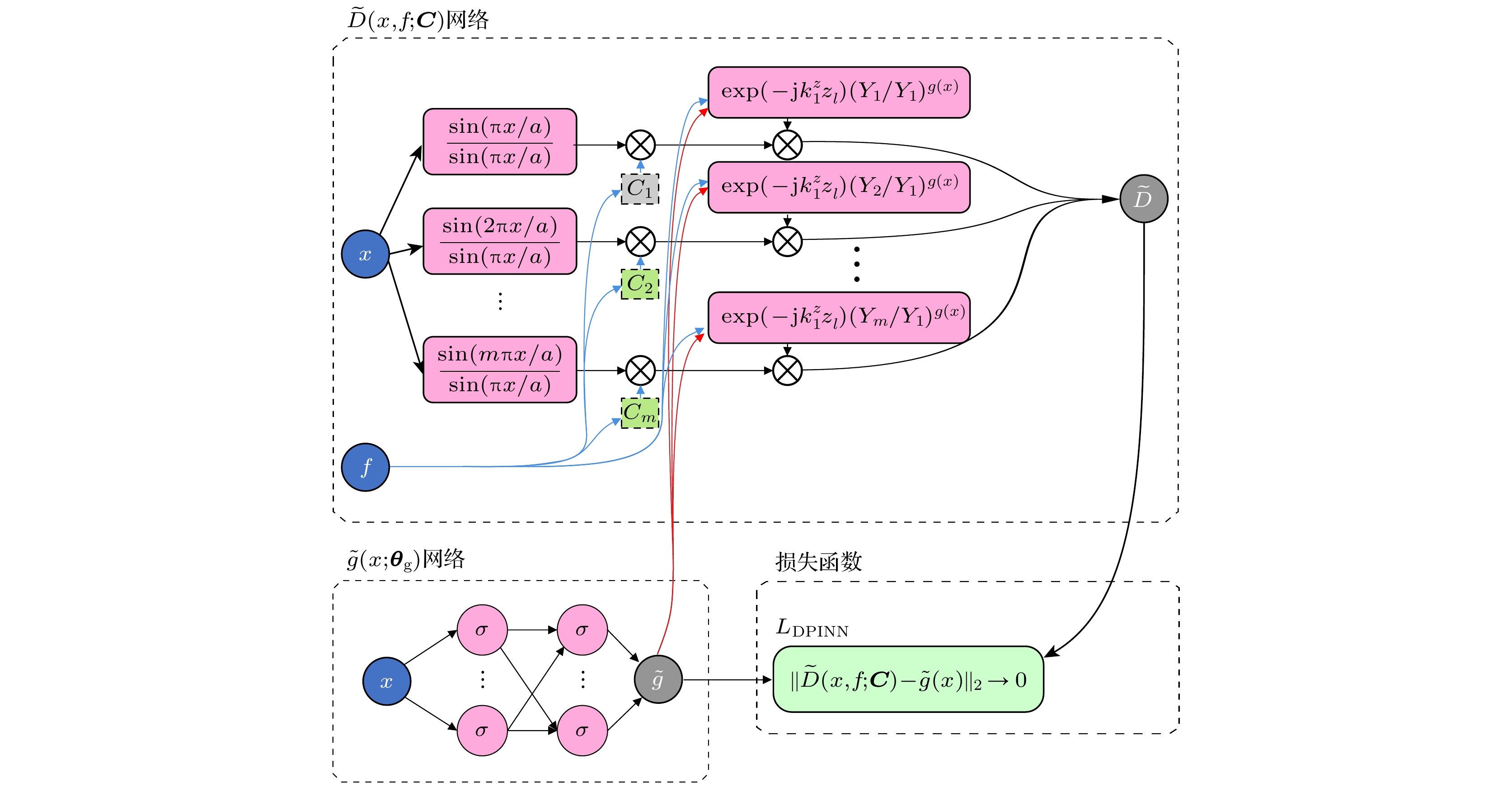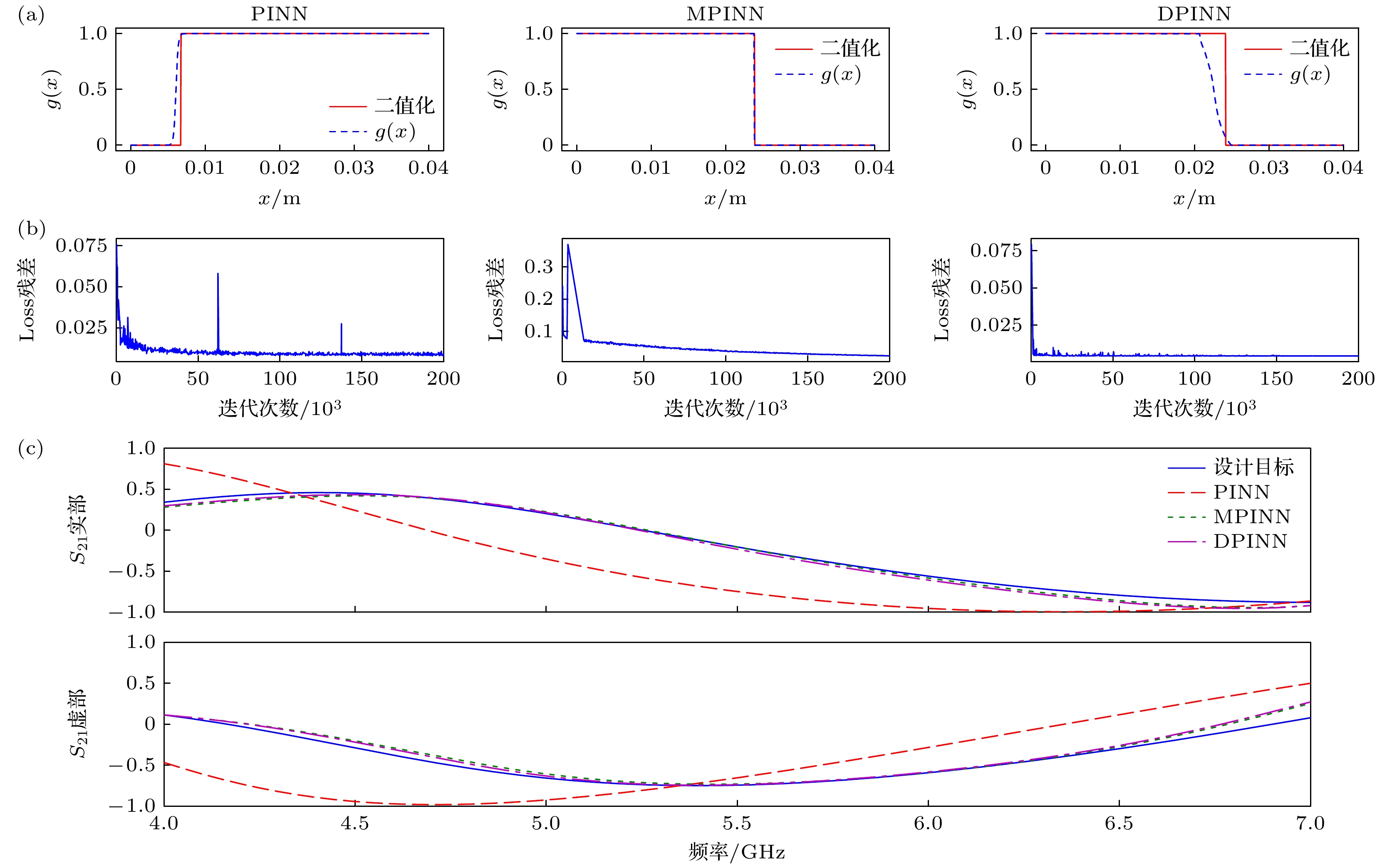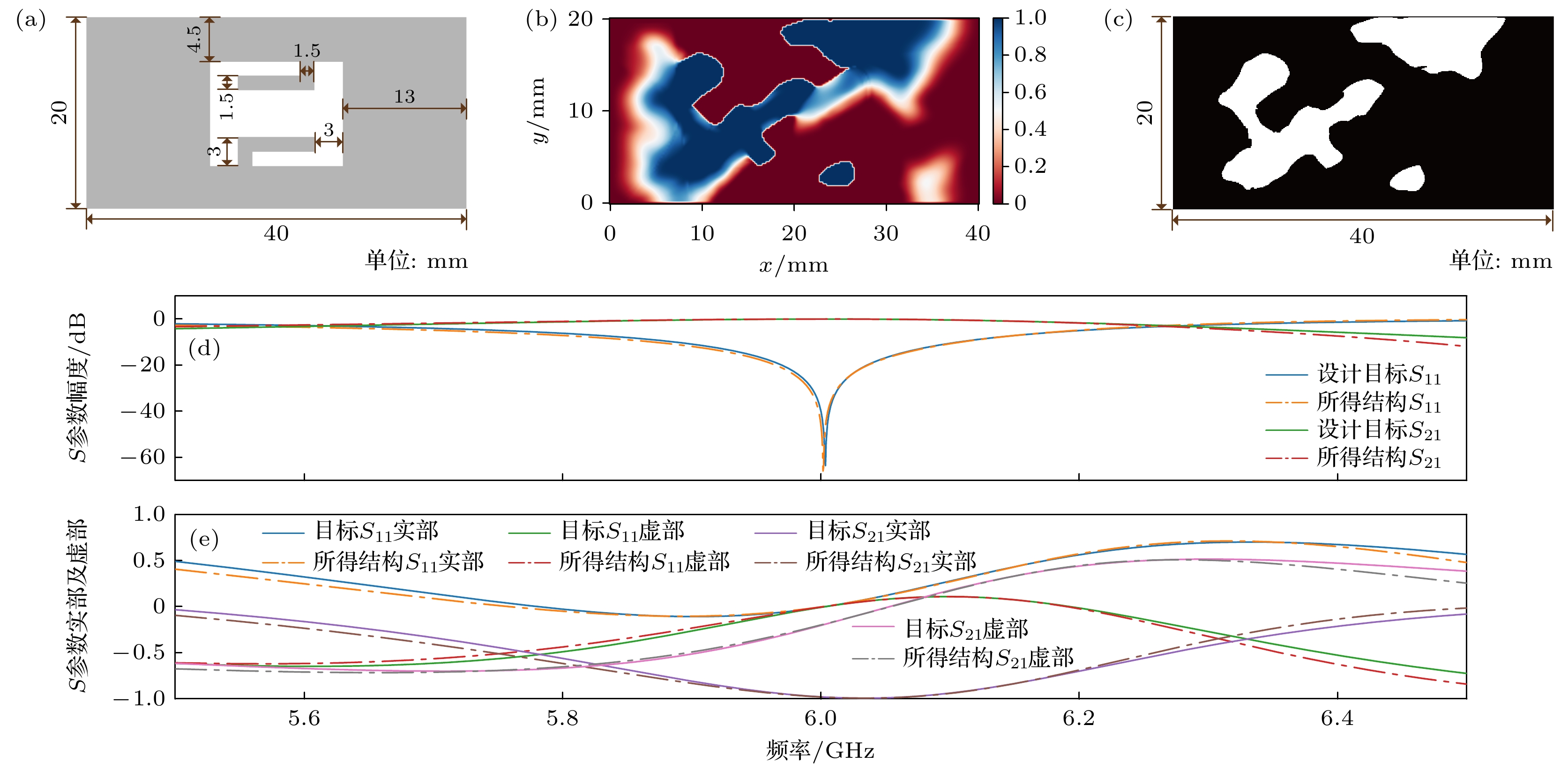-
使用物理启发的神经网络方法求解物理逆问题正成为一种趋势, 但仅通过损失函数引入物理信息的方案难以求解. 为解决电磁器件逆设计中物理启发神经网络模型不易收敛的问题, 本文引出了深度物理启发神经网络. 深度物理启发神经网络使用偏微分方程的基本解构成的网络替代传统的前馈神经网络, 将数学物理模型嵌入网络结构. 这一特点使深度物理启发网络的训练参数具有实际物理意义, 相较传统物理启发神经网络拥有更简洁的损失函数, 计算效率和稳定性也有明显提升. 以二端口波导的散射参数设计为例, 数值实验结果表明该方案在保证与设计目标相关性系数大于0.99的同时, 最快可在25 s实现器件逆设计, 且能够获得多样化的结构设计结果. 本文提出的方法为逆物理问题求解构建及神经网络的物理信息嵌入探索提供了新思路.Using physics-informed neural networks to solve physical inverse problems is becoming a trend. However, it is difficult to solve the scheme that only introduces physical knowledge through the loss function. Constructing a reasonable loss function to make the results converge becomes a challenge. To address the challenge of physics-informed neural network models for inverse design of electromagnetic devices, a deep physics-informed neural network is introduced by using the mode matching method. The physical equations have been integrated into the network structure when the network is constructed. This feature makes the deep physics-informed neural network have a more concise loss function and higher computational efficiency when solving physical inverse problems. In addition, the training parameters of deep physics-informed neural networks are physically meaningful compared with those of traditional physics-informed neural networks. Users can control the network by parameters more easily. Taking the scattering parameter design of a two-port waveguide for example, we present a new metal topology inverse design scheme and give a detailed explanation. In numerical experiments, we target a set of physically realizable scattering parameters and inversely design the metallic septum by using a deep physics-informed neural network. The results show that the method can not only achieve the design target but also obtain solutions with different topologies. The establishment of multiple solutions is extremely valuable in implementing the inverse design. It can allow the designer to determine the size and location of the design area more freely while achieving the performance requirements. This scheme is expected to promote the application and development of the inverse design of electromagnetic devices.
-
Keywords:
- inverse problem /
- inverse design /
- physics-informed neural networks /
- topology optimization
[1] Carleo G, Cirac I, Cranmer K, Daudet L, Schuld M, Tishby N, Vogt-Maranto L, Zdeborová L 2019 Rev. Mod. Phys. 91 045002
 Google Scholar
Google Scholar
[2] Kim B, Lee S, Kim J 2020 Sci. Adv. 6 eaax9324
 Google Scholar
Google Scholar
[3] Li L, Wang L G, Teixeira F L, Liu C, Nehorai A, Cui T J 2018 IEEE Trans. Antennas Propag. 67 1819
 Google Scholar
Google Scholar
[4] Yang R, Xu X, Li X, Wang L, Pu F 2020 IGARSS 2020-2020 IEEE International Geoscience and Remote Sensing Symposium Waikoloa, HI, USA, September 26–October 2, 2020 pp1743–1746
[5] Shen C, Krenn M, Eppel S, Aspuru-Guzik A 2021 Mach. Learn. -Sci. Technol. 2 03LT02
 Google Scholar
Google Scholar
[6] Gebauer N W, Gastegger M, Hessmann S S, Müller K R, Schütt K T 2022 Nat. Commun. 13 973
 Google Scholar
Google Scholar
[7] Xu X, Sun C, Li Y, Zhao J, Han J, Huang W 2021 Opt. Commun. 481 126513
 Google Scholar
Google Scholar
[8] Liu Z, Zhu D, Rodrigues S, P, Lee K, T, Cai W 2018 Nano Lett. 18 6570
 Google Scholar
Google Scholar
[9] Kudyshev Z A, Kildishev A V, Shalaev V M, Boltasseva A 2020 Appl. Phys. Rev. 7 021407
 Google Scholar
Google Scholar
[10] Song Q, Xu F, Zhu X X, Jin Y Q 2021 IEEE Trans. Geosci. Remote Sensing 60 1
 Google Scholar
Google Scholar
[11] Raissi M, Perdikaris P, Karniadakis G E 2019 J. Comput. Phys. 378 686
 Google Scholar
Google Scholar
[12] Cai S, Wang Z, Wang S, Perdikaris P, Karniadakis G E 2021 J. Heat Transfer 143 060801
 Google Scholar
Google Scholar
[13] Mao Z, Jagtap A D, Karniadakis G E 2020 Comput. Meth. Appl. Mech. Eng. 360 112789
 Google Scholar
Google Scholar
[14] Khan A, Lowther D A 2022 IEEE Trans. Magn. 58 1
 Google Scholar
Google Scholar
[15] Chen Y, Dal Negro L 2022 APL Photonics 7 010802
 Google Scholar
Google Scholar
[16] Wang S, Teng Y, Perdikaris P 2021 SIAM J. Sci. Comput. 43 A3055
 Google Scholar
Google Scholar
[17] Lu L, Pestourie R, Yao W, Wang Z, Verdugo F, Johnson S G 2021 SIAM J. Sci. Comput. 43 B1105
 Google Scholar
Google Scholar
[18] Rohrhofer F M, Posch S, Geiger B C 2021 arXiv Preprint arXiv: 2105.00862
[19] Yu J, Lu L, Meng X, Karniadakis G E 2022 Comput. Meth. Appl. Mech. Eng. 393 114823
 Google Scholar
Google Scholar
[20] Daw A, Bu J, Wang S, Perdikaris P, Karpatne A 2022 arXiv Preprint arXiv: 2207.02338
[21] Peng W, Zhou W, Zhang X, Yao W, Liu Z 2022 arXiv Preprint arXiv: 2205.01051
[22] Hu Y, Jin Y, Wu X, Chen J 2021 IEEE Trans. Antennas Propag. 70 767
 Google Scholar
Google Scholar
[23] Leroy M 1983 IEEE Trans. Antennas Propag. 31 655
 Google Scholar
Google Scholar
-
图 5 四频点二端口矩形波导逆设计结果 (a)
$g\left( x \right)$ 分布与二值化结果; (b) 损失函数误差与优化迭代次数关系; (c) 数值仿真测得散射参数Fig. 5. Inverse design results of two-port rectangular waveguide targeted at four frequency points: (a) The output
$g\left( x \right)$ of the network and its binarization result; (b) the relationship between the loss function error and the number of optimization iterations; (c) scattering parameters measured by the numerical simulation.图 7 二维膜片逆设计 (a) 设计目标参数获取模型尺寸示意图; (b) DPINN输出
$ \tilde g(x, y) $ ; (c) 二值化后结构尺寸示意图; (d) 数值仿真测得散射参数幅度; (e) 数值仿真测得散射参数实部及虚部Fig. 7. Inverse design of two-dimensional iris: (a) Schematic diagram of model size for obtaining design target parameters; (b)
$\tilde g(x, y)$ of the DPINN output; (c) structural dimension diagram after binarization; (d) the amplitudes of the scattering parameters measured by numerical simulation; (e) the real and imaginary parts of the scattering parameters measured by numerical simulation.表 1 逆设计目标S参数
Table 1. Target S parameter of inverse design.
参数项 4 GHz 5 GHz 6 GHz 7 GHz S21实部 0.34244 0.20439 –0.55995 –0.88062 S21虚部 0.11409 –0.65687 –0.59222 0.07926 表 2 网络模型详细参数
Table 2. Detailed parameters of neural network model.
-
[1] Carleo G, Cirac I, Cranmer K, Daudet L, Schuld M, Tishby N, Vogt-Maranto L, Zdeborová L 2019 Rev. Mod. Phys. 91 045002
 Google Scholar
Google Scholar
[2] Kim B, Lee S, Kim J 2020 Sci. Adv. 6 eaax9324
 Google Scholar
Google Scholar
[3] Li L, Wang L G, Teixeira F L, Liu C, Nehorai A, Cui T J 2018 IEEE Trans. Antennas Propag. 67 1819
 Google Scholar
Google Scholar
[4] Yang R, Xu X, Li X, Wang L, Pu F 2020 IGARSS 2020-2020 IEEE International Geoscience and Remote Sensing Symposium Waikoloa, HI, USA, September 26–October 2, 2020 pp1743–1746
[5] Shen C, Krenn M, Eppel S, Aspuru-Guzik A 2021 Mach. Learn. -Sci. Technol. 2 03LT02
 Google Scholar
Google Scholar
[6] Gebauer N W, Gastegger M, Hessmann S S, Müller K R, Schütt K T 2022 Nat. Commun. 13 973
 Google Scholar
Google Scholar
[7] Xu X, Sun C, Li Y, Zhao J, Han J, Huang W 2021 Opt. Commun. 481 126513
 Google Scholar
Google Scholar
[8] Liu Z, Zhu D, Rodrigues S, P, Lee K, T, Cai W 2018 Nano Lett. 18 6570
 Google Scholar
Google Scholar
[9] Kudyshev Z A, Kildishev A V, Shalaev V M, Boltasseva A 2020 Appl. Phys. Rev. 7 021407
 Google Scholar
Google Scholar
[10] Song Q, Xu F, Zhu X X, Jin Y Q 2021 IEEE Trans. Geosci. Remote Sensing 60 1
 Google Scholar
Google Scholar
[11] Raissi M, Perdikaris P, Karniadakis G E 2019 J. Comput. Phys. 378 686
 Google Scholar
Google Scholar
[12] Cai S, Wang Z, Wang S, Perdikaris P, Karniadakis G E 2021 J. Heat Transfer 143 060801
 Google Scholar
Google Scholar
[13] Mao Z, Jagtap A D, Karniadakis G E 2020 Comput. Meth. Appl. Mech. Eng. 360 112789
 Google Scholar
Google Scholar
[14] Khan A, Lowther D A 2022 IEEE Trans. Magn. 58 1
 Google Scholar
Google Scholar
[15] Chen Y, Dal Negro L 2022 APL Photonics 7 010802
 Google Scholar
Google Scholar
[16] Wang S, Teng Y, Perdikaris P 2021 SIAM J. Sci. Comput. 43 A3055
 Google Scholar
Google Scholar
[17] Lu L, Pestourie R, Yao W, Wang Z, Verdugo F, Johnson S G 2021 SIAM J. Sci. Comput. 43 B1105
 Google Scholar
Google Scholar
[18] Rohrhofer F M, Posch S, Geiger B C 2021 arXiv Preprint arXiv: 2105.00862
[19] Yu J, Lu L, Meng X, Karniadakis G E 2022 Comput. Meth. Appl. Mech. Eng. 393 114823
 Google Scholar
Google Scholar
[20] Daw A, Bu J, Wang S, Perdikaris P, Karpatne A 2022 arXiv Preprint arXiv: 2207.02338
[21] Peng W, Zhou W, Zhang X, Yao W, Liu Z 2022 arXiv Preprint arXiv: 2205.01051
[22] Hu Y, Jin Y, Wu X, Chen J 2021 IEEE Trans. Antennas Propag. 70 767
 Google Scholar
Google Scholar
[23] Leroy M 1983 IEEE Trans. Antennas Propag. 31 655
 Google Scholar
Google Scholar
计量
- 文章访问数: 9636
- PDF下载量: 457
- 被引次数: 0













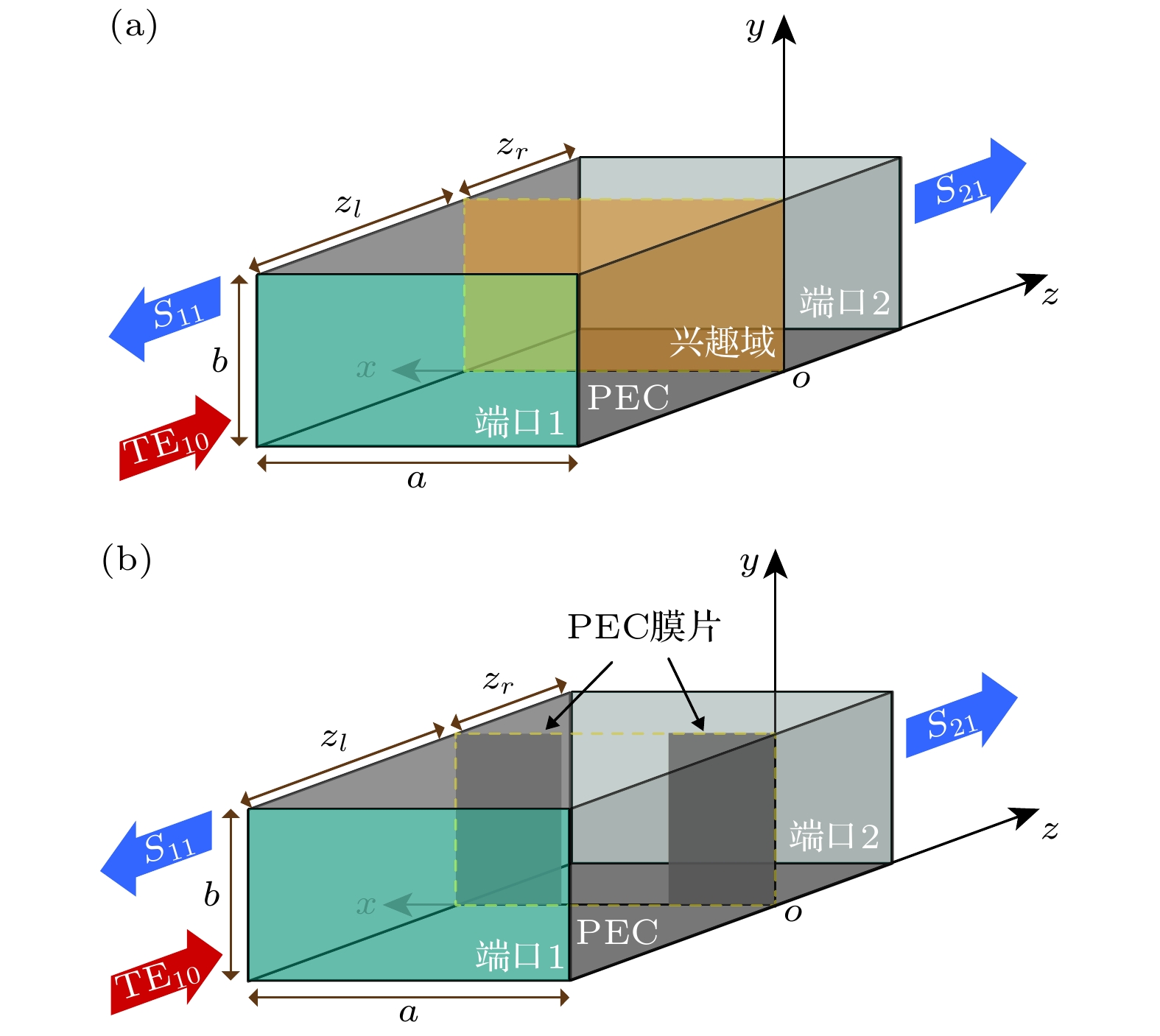
 下载:
下载:
